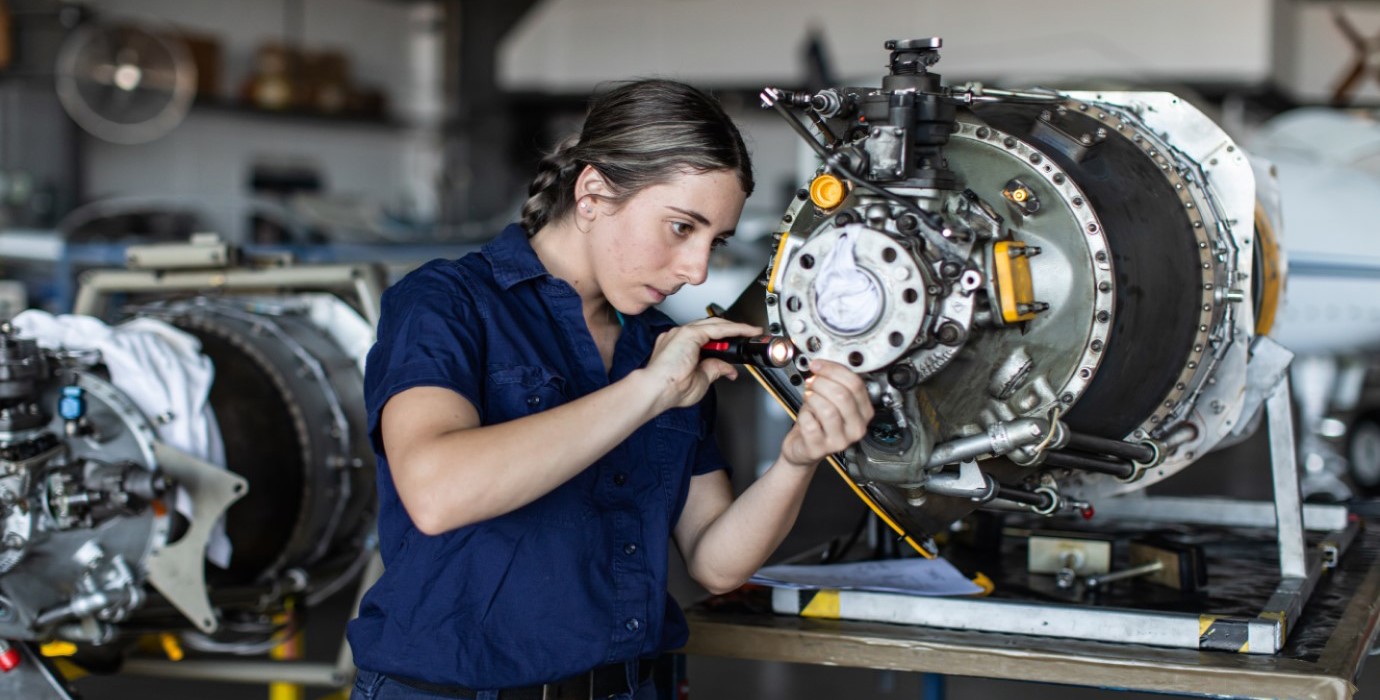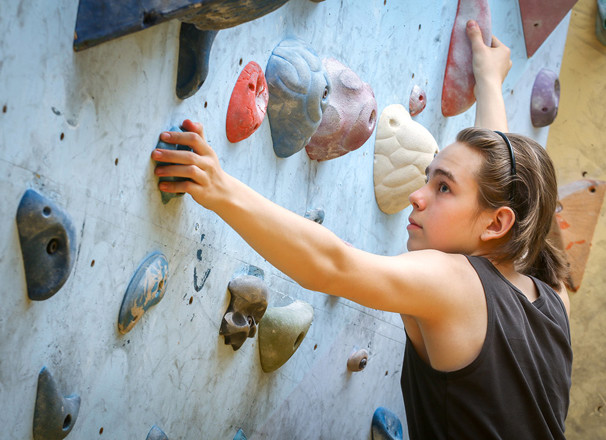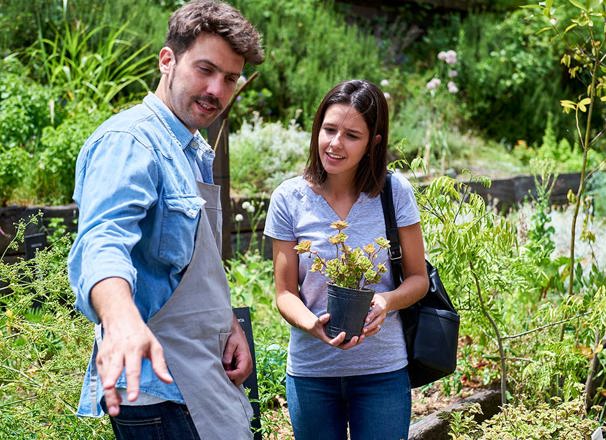The Government of Canada’s Skills for Success model defines creativity and innovation as “your ability to imagine, develop, express, encourage, and apply ideas in ways that are novel or unexpected, or that challenge existing methods and norms.”
Creativity allows us to come up with ideas for new and better ways of doing things. Innovation allows us to translate those ideas into products or services. Together, these skills drive progress and keep businesses competitive.
The Government of Canada’s Skills for Success model includes 9 skills that help people to thrive, both at work and in life. Launched in 2021, this model updates the original Essential Skills framework to reflect changes in the Canadian labour market and the modern workplace. Creativity and innovation make up 1 of 2 new skills that were added to the model, along with adaptability.
In a rapidly changing world, employers value curious people who can think outside the box to find creative solutions, and who inspire others to do the same. Exercising your creativity in ways that feel meaningful can also help you enjoy your work more and find fulfillment in your personal life.
What does this skill include?
The Skills for Success model divides creativity and innovation into 6 components:
- Use your imagination and curiosity. Imagine different situations and possibilities. Be an active learner when it comes to new skills. Step out of your comfort zone and consider new ideas and experiences as opportunities for personal development.
- Identify opportunities to innovate. What ideas and habits of thought do you think of as normal? Challenge them.
- Generate ideas that are new to yourself or others. Existing approaches can limit innovative thinking. Choose a new path. Be curious—ask questions and look for hidden patterns.
- Develop your ideas. Turn existing ideas and approaches upside down to see if the opposite is true. Extend ideas to their limits. Brainstorm associated words and images.
- Apply your ideas. Follow your ideas through and assess their usefulness to your projects. Failures happen, but they help us develop better solutions.
- Seek self-improvement. Encourage habits and behaviours that build creativity in yourself and others. Make time for relaxed, playful thinking. Share tools, information, and ideas.
Measuring creativity and innovation
Your proficiency level depends on how easily you come up with and develop ideas in different situations. It reflects your ability to:
- Come up with original ideas independently.
- Try out new ideas.
- Accept and learn from failure.
- Consider the ideas of others and encourage others to be creative and innovative.
For creativity and innovation, the Skills for Success model defines 3 levels: entry, intermediate, and advanced. Here are examples of what this skill might look like at each level:
- Entry level. In a brainstorming session, you work with your coworkers to generate and explore ideas for a new product.
- Intermediate level. You are in charge of researching and developing a new version of an existing product. You need to test different ideas, gather and analyze feedback, and improve the design until it meets the company’s goals.
- Advanced level. Your goal is to design an innovative product that stands out from the competition. You need to come up with a wide range of original ideas, considering different materials, technologies, and user needs. You must evaluate the limitations of each idea. Will it work? What will it cost to increase the chances of success?
Creativity and innovation in action
Here are some examples of how creativity and innovation come into play in different occupations:
- Chefs experiment with ingredients and cooking techniques to create recipes and menus. They also find creative and artistic ways to arrange and present the food they serve.
- Chemical engineers work in research labs to develop and improve physical and chemical products like drugs, detergents, fertilizers, food products, fuels, and fabrics.
- Industrial designers create new designs and find innovative ways to improve existing products and systems, from furniture and electronics to sporting goods and automobiles.
- Makeup artists use creativity and imagination to prepare performers for stage, television, and film appearances. They research, test, and experiment with makeup and application techniques.
Creativity and innovation strategies
Here are some strategies to keep in mind as you explore your creative side:
- Turn off your inner critic and brainstorm freely. Come up with as many ideas as possible, even if they seem wild or silly.
- Be persistent. If your first idea does not work, keep coming up with new ones and experimenting with new approaches. As Thomas Edison famously said, “Genius is 1% inspiration and 99% perspiration.”
- Be playful. Many people find that they come up with their best ideas when they’re relaxing or doing something they enjoy.
- Take breaks. Let your subconscious work on a problem for you—but keep a notebook handy—inspiration may strike in the shower, or at 3:00 in the morning!
- Keep a journal. Whether you’re writing or sketching, you might be surprised at how ideas develop when you think on paper.
- Get out of your comfort zone. New experiences are a great way to refresh your perspective and find inspiration.
- Collaborate with others. Be brave about sharing your ideas and be open to constructive feedback.
- Make use of technology. Stay up to date on new technologies. Look for ways you can use them to improve processes, solve problems, and innovate.
Helpful resources
Online learning courses
Improve your core skills at home by taking online courses. Online learning offers courses covering a wide range of topics, and some platforms offer free courses or free trials. Find out what your options are by searching these online learning sites for the skills you want to build:
Check out these resources to help you assess and build your creativity and innovation skills:
- Download the Skills for Success Work Ready Youth Program and UP Skills for Work creativity and innovation workbooks for fun exercises to get you thinking about your creativity and how to boost it.
- Try the alis skills quiz and some personality tests to get a sense of how important creativity is to you in your life and work.
- Explore online videos and courses for inspiration!
Explore the Skills for Success model
Although particular skills may be more important in some jobs than others, all 9 skills in the Skills for Success model are needed for most occupations. These skills are not just about work—they come into play throughout our lives, forming a foundation for other technical and life skills, knowledge, and relationships.
Learn about the other skills for success:
Skills for Success: Creativity and Innovation (1:02)
Creativity and innovation skills help you come up with new ideas and approaches—both at work and outside work. They help you think about things differently than in the past. And they help you change things for the better. People who are creative and innovative have curious minds. They find inspiration from a broad range of experiences and perspectives. They think of mistakes as learning moments. They inspire others to innovate and support them in developing their own creativity.





